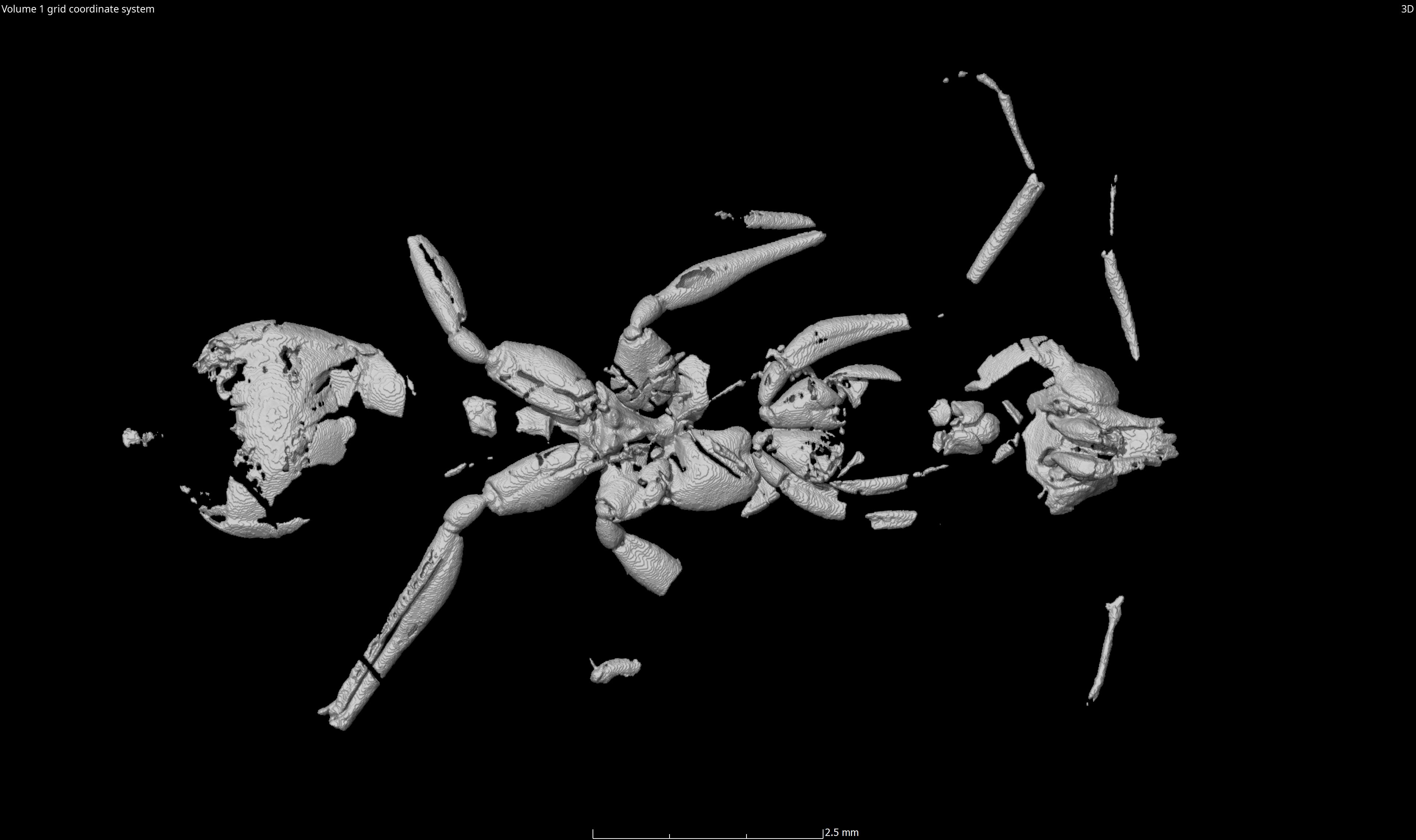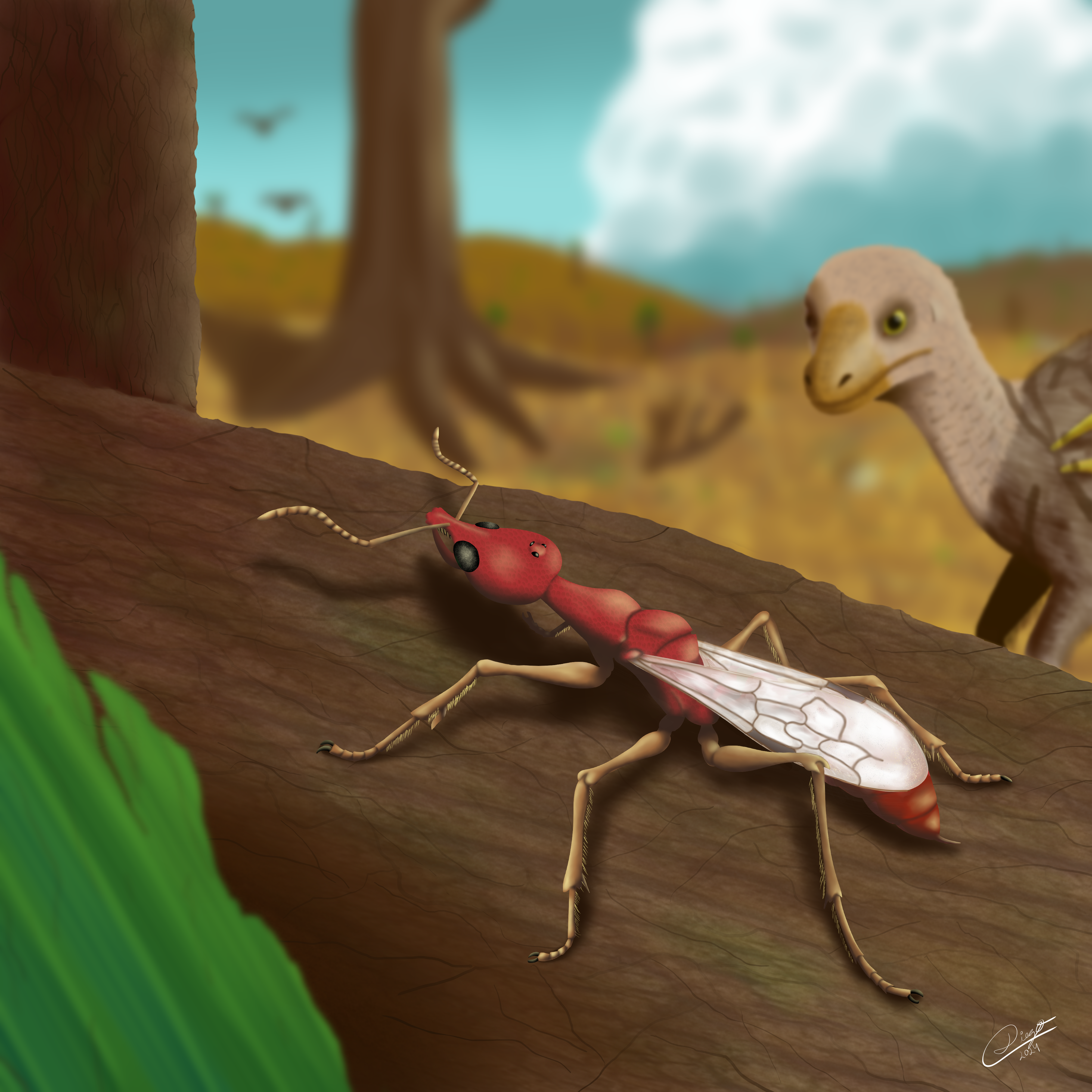Entombed in stone for 113 million years, this ancient insect is the oldest ant specimen known to science. It’s a new species that belongs to an extinct subfamily of ants called Haidomyrmecinae – better known as hell ants – that only lived during the Cretaceous period when dinosaurs roamed the Earth.
The fossil was unearthed from the Crato Formation, a treasure trove of early Cretaceous fossils in northeastern Brazil’s Araripe Plateau.
“Our team has discovered a new fossil ant species representing the earliest undisputable geological record of ants,” Anderson Lepeco, study author from Museu de Zoologia da Universidade de São Paulo in Brazil, said in a statement.
“When I encountered this extraordinary specimen, we immediately recognized its significance, not only as a new species but as potentially the definitive evidence of ants in the Crato Formation,” said Lepeco.

CT scan reconstruction of the hell ant fossil.
Image credit: Odair M. Meira
Encased in a block of limestone, the “remarkably well-preserved” ant was scanned using high-resolution micro-computed tomography, a cutting-edge imaging technique that’s able to glimpse inside stone-bound specimens without destroying them.
Hell ants earned their fearsome name because of their nightmarish appearance, particularly the devil-like horns that might have been used to grip their prey. This latest discovery is no different, albeit with an interesting twist.
Though it belonged to an ancient lineage, this hell ant already displayed an array of highly specialized features. Unlike modern ants, whose mandibles swing side-to-side like pincers, this prehistoric species wielded a jaw that extended forward, running parallel to its head, paired with a facial projection that jutted out just in front of the eyes.
“What makes this discovery particularly interesting is that it belongs to the extinct ‘hell ant,’ known for their bizarre predatory adaptations. Despite being part of an ancient lineage, this species already displayed highly specialized anatomical features, suggesting unique hunting behaviors,” explained Lepeco.

Paleoart showing what the new species of hell ant probably looked like, featuring a goofy dinosaur.
Image credit: Diego M. Matielo
“Finding such an anatomically specialized ant from 113 million years ago challenges our assumptions about how quickly these insects developed complex adaptations. The intricate morphology suggests that even these earliest ants had already evolved sophisticated predatory strategies significantly different from their modern counterparts,” he continued.
This ancient hell ant also bears a striking resemblance to relatives discovered in Myanmar, nearly halfway around the globe. The discovery hints at a vast prehistoric distribution, suggesting these formidable ants were crawling across the shifting continents of the Cretaceous world.
The study is published in the journal Current Biology.
Source Link: A 113-Million-Year-Old Hell Ant Found In Brazil Is The Oldest Ant Known To Science